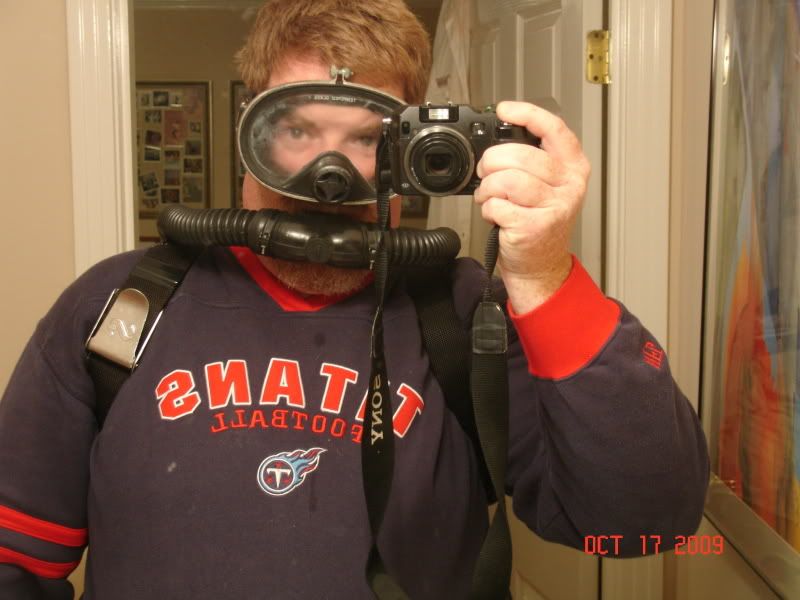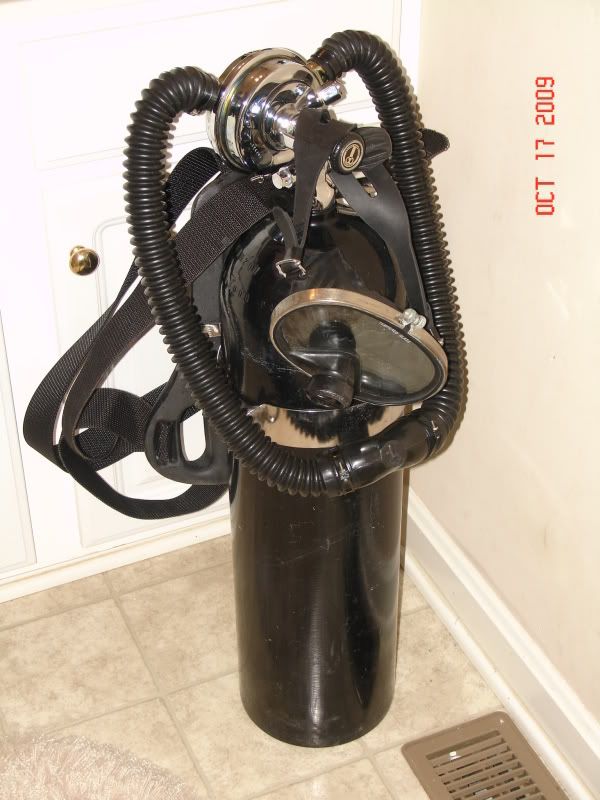Looking good. In tub diving, I find it best to be the first one in, otherwise the vis suffers a lot.
I would put the tank a little lower but they tend to ride differently in the water once some of the weight is buoyed and gravity is at a different angle, for now that should do. You might have to move the mouthpiece a little to get the angle correct. As the hoses float on the dive they will tend to change to angle of the mouthpiece, it should sit in your mouth without pulling up or down.
On a technical note, how/where did you set the IP and did you aim one of the holes in the LP nozzle directly into the intake hose opening? I am assuming you dissambled the rest of the reg and if not, you should at least check both items before diving the reg. No telling where the IP was set or has drifted off to and it is not unheard of for the last tech that "serviced" the reg to incorrectly install the LP nozzle.
I would put the tank a little lower but they tend to ride differently in the water once some of the weight is buoyed and gravity is at a different angle, for now that should do. You might have to move the mouthpiece a little to get the angle correct. As the hoses float on the dive they will tend to change to angle of the mouthpiece, it should sit in your mouth without pulling up or down.
On a technical note, how/where did you set the IP and did you aim one of the holes in the LP nozzle directly into the intake hose opening? I am assuming you dissambled the rest of the reg and if not, you should at least check both items before diving the reg. No telling where the IP was set or has drifted off to and it is not unheard of for the last tech that "serviced" the reg to incorrectly install the LP nozzle.







